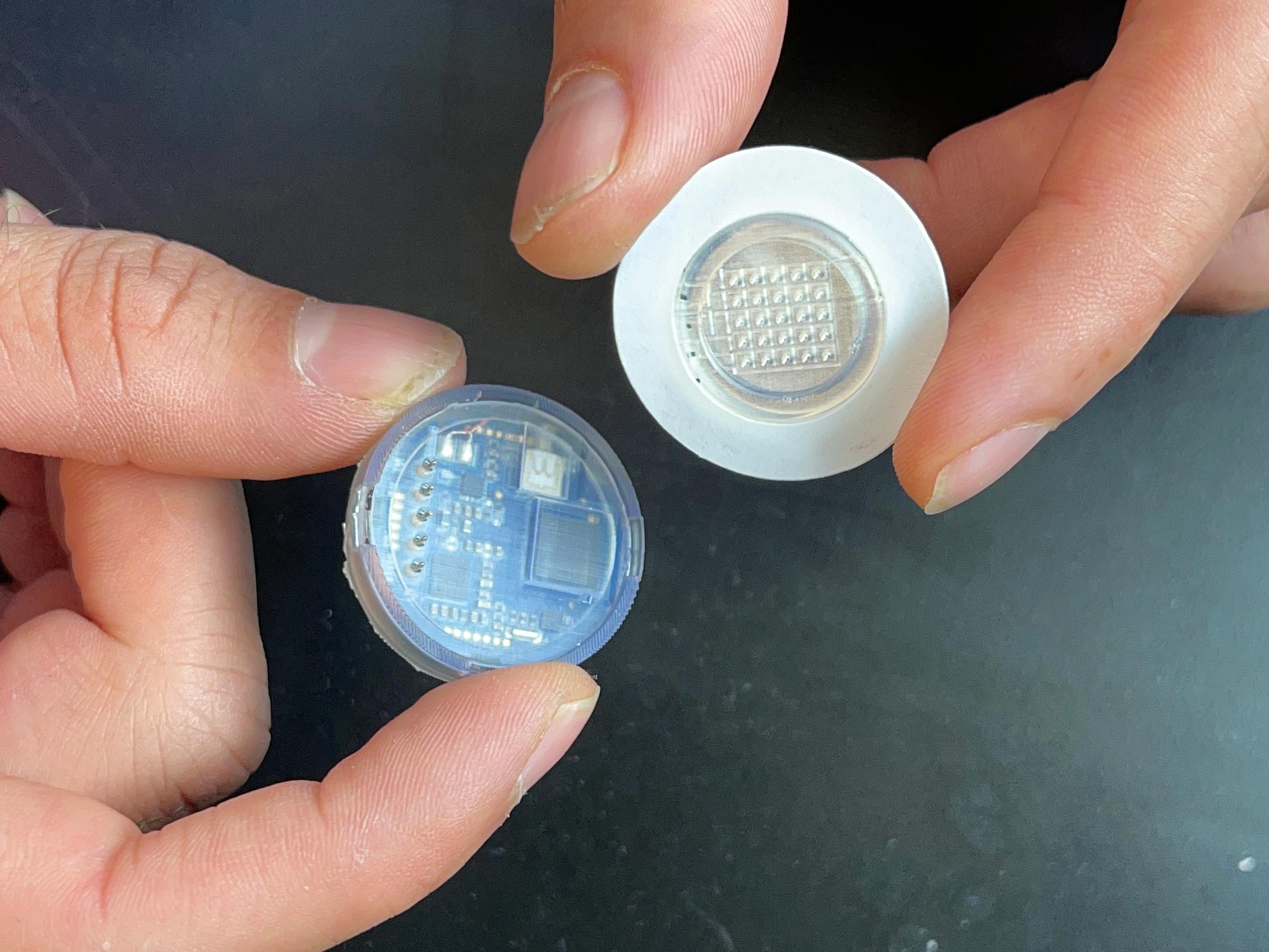Researchers say this wearable sensor will be able to measure glucose, lactate, and alcohol levels in the blood.
- The small device, about the size of a bottle cap, is applied to the skin.
- The device can be worn on the upper arm while the person goes about their daily activities.
- The device can be recharged on any wireless charging pad used for smart phones and watches.
- Control of alcohol levels is useful because its consumption can reduce glucose levels, so knowing both data would help these people to prevent the rate of blood sugar from falling too low after ingesting this type of beverage.
Measuring blood sugar levels, knowing if a person has had too much to drink or controlling muscle fatigue during a workout are the three things that a small device that is installed on the skin and that have been developed by engineers at the University of California, in San Diego (USA).
This prototype of a portable tiny wearable device, whose description is published in the journal Nature Biomedical Engineering, can monitor glucose, alcohol and lactate levels continuously and in real time.
The small device, about the size of a bottle cap, is applied to the skin through a kind of Velcro/patch of microscopic needles, one-fifth the width of a human hair.
The microneedle patch is attached to a reusable electronics box that houses the battery, electronic sensors, wireless transmitter, and other electronics.
Integrating all these components into a small wireless device was one of the team's biggest challenges, according to a statement from the University of California, which also required clever design and engineering to combine reusable electronic components - they must stay dry - with the microneedle patch, which is exposed to biological fluids.
Wearing the device is not painful, according to those responsible, since the microneedles barely penetrate the surface of the skin to detect the biomolecules of the interstitial fluid, the fluid that surrounds the cells under the skin.
This technology can be worn on the upper arm and sends data wirelessly to an app. "It's like a complete laboratory on the skin," summarizes the director of the Center for Wearable Sensors, Joseph Wang.
Most of these types of commercial health devices, such as continuous glucose monitors for patients with diabetes, only measure a marker; the problem, according to the researchers, is that they leave out information that could help people with diabetes, for example, manage their disease more effectively.
Information on lactate, which can be monitored during exercise as a biomarker of muscle fatigue, is also useful because physical activity influences the body's ability to regulate glucose.
"With our device, people can see the interaction between their glucose spikes or drops with their diet, exercise and alcohol consumption, which could improve their quality of life," says Farshad Tehrani, also an author of the study.
The device was tested on five volunteers who wore it on their upper arms while exercising, at meals and when having a glass of wine.
The glucose, alcohol, and lactate measurements made by this closely matched those made, respectively, by a blood glucose meter, a breathalyzer, and blood lactate measurements in the laboratory.
The researchers have created a company -AquilX- to continue developing the technology; now, for example, they want to improve the duration of the patch and are studying the possibility of adding more sensors to the device to monitor patients' medication levels and other health values.




